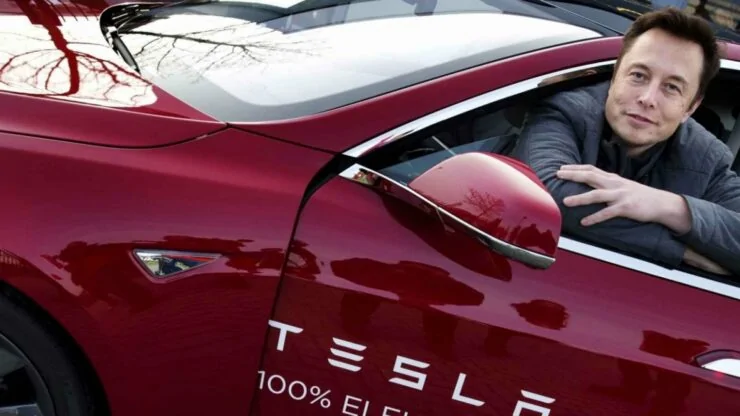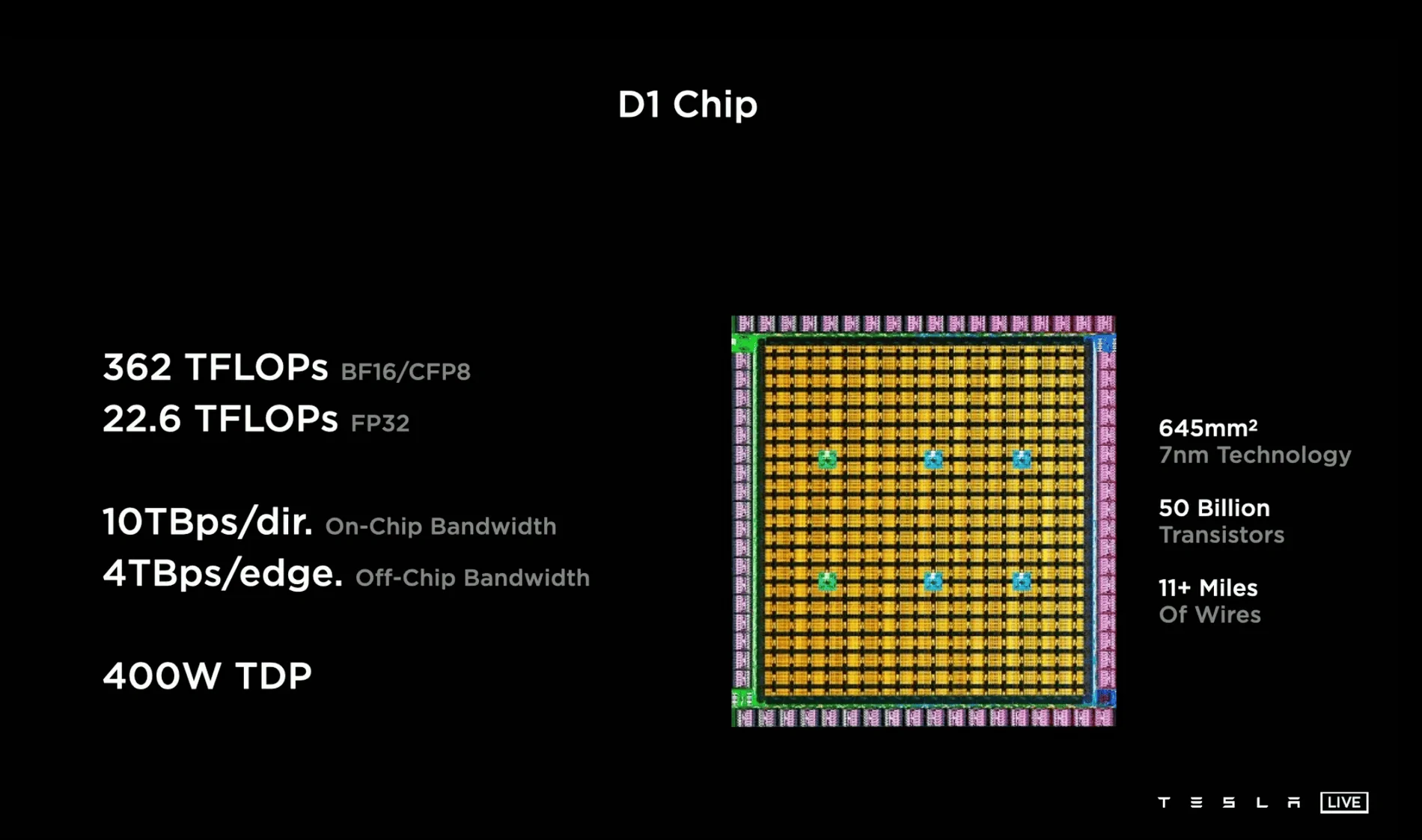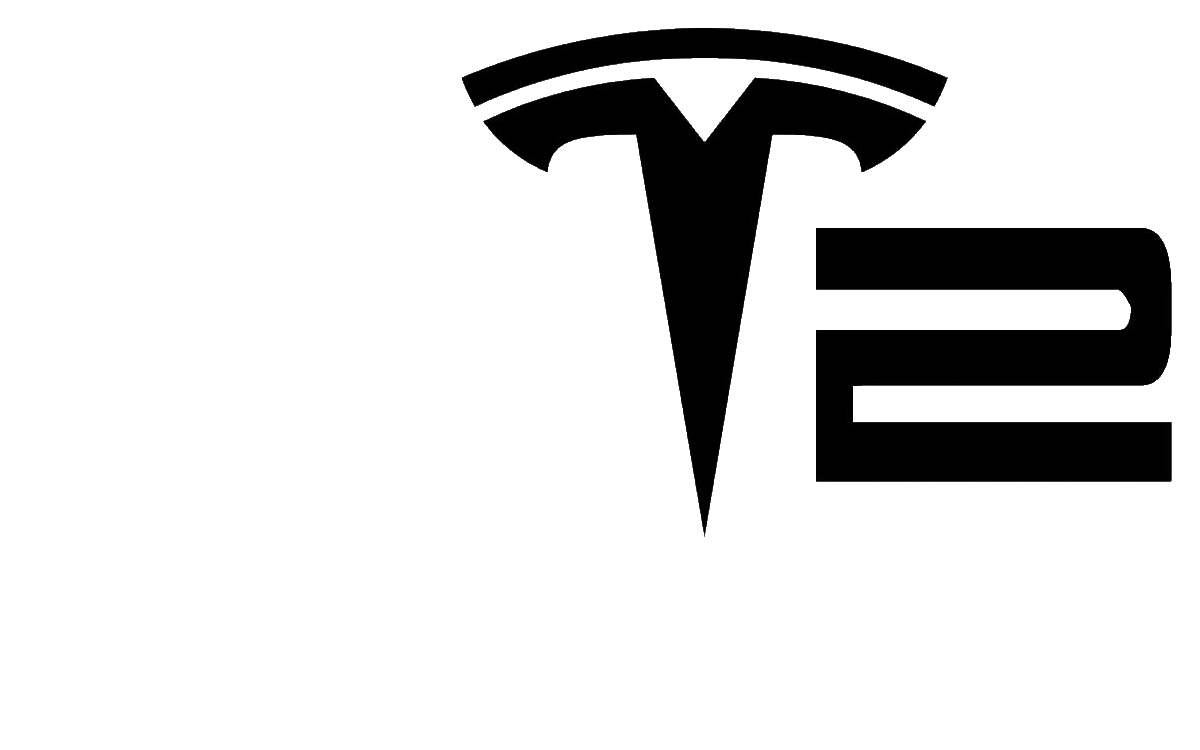TruckElectric
Well-known member
- First Name
- Bryan
- Joined
- Jun 16, 2020
- Threads
- 609
- Messages
- 2,004
- Reaction score
- 1,493
- Location
- Texas
- Vehicles
- Dodge Ram diesel
- Occupation
- Retired
- Thread starter
- #1
Tesla’s (TSLA) D1 Chip Is a Brilliant Checkmate to the Company’s NHTSA Investigation Disaster
By Rohail Saleem

Image Source: Getty
Tesla (NASDAQ:TSLA 673.47 -2.25%), the world’s largest EV manufacturer, just pulled off a brilliant gambit to neutralize the creeping threat from the ongoing NHTSA investigation while also solidly establishing itself as a tech company, thereby justifying the stock’s hefty tech premium.
As we noted in a previous post, the past couple of weeks have not been kind to Tesla. Back in June, the company canceled its Model S Plaid+ version, which reportedly featured a range of around 520 miles. Then in early August, Tesla delayed the launch of its much-anticipated Cybertruck from the end of 2021 to 2022, while citing bottlenecks such as the steel exoskeleton body requiring a revamp of the production process.
The biggest threat to the company’s bullish narrative, however, came this week when the US National Highway Traffic Safety Administration (NHTSA) dropped a proverbial bombshell. To wit, NHTSA’s Office of Defects Investigation (ODI) has now initiated an evaluation of Tesla’s Autopilot system following a series of troubling accidents. Readers should note that the investigation may plod along for months, with this added uncertainty acting as a conduit for further stock price weakness.
So why does NHTSA’s investigation matter so much? Well, depending on the severity of the findings, Tesla may be forced to fundamentally alter its Autopilot system or disable it altogether. Bear in mind that Tesla’s semi-autonomous driving system, dubbed the Autopilot, has recently gone through a major overhaul, with the company abandoning the radar sensor in favor of eight cameras. While the change does bring cost benefits, some analysts argue that it would render the system more vulnerable to adverse weather conditions. Readers should note that the company continues to test LiDAR sensors for its Autopilot system, setting the stage for possible incorporation at a later stage.
This brings us to the crux of the matter. Tesla held its AI Day on the 19th of August. During the event, the EV manufacturer unveiled a humanoid robot prototype, known as the Tesla Bot, while also detailing the company’s AI-focused ambitions. Nonetheless, Tesla’s D1 chip stole the proverbial thunder. The chip, built completely in-house using a 7nm architecture, will power the company’s Dojo supercomputer – the engine behind Tesla’s vast neural network training ambitions. Crucially, according to Elon Musk, the chip would empower Dojo to process images around four times faster than other computing systems. Tesla aims to regularly refine its Dojo-trained AI software and then push those incremental improvements to its EVs using OTA updates.

Image Credit: Tesla
During the presentation, Tesla conceded that the Full Self-Driving (FSD) capability of the Autopilot was being hampered by two factors: temporary blockage of the cameras’ field of view and faulty memory of road signs. To counter this, Tesla engineers are now utilizing a spatial recurring network video module to train the AI to keep track of spatial as well as chronal queues. In theory, this should help the Autopilot system overcome its two shortcomings.
So why do we believe that the D1 chip is a brilliant checkmate? Well, Elon Musk has now essentially neutralized the growing concern around the Autopilot system’s current capabilities. By conjoining the FSD with the D1 chip, the company has neutered the argument that the Autopilot is a dud product. More importantly, this gambit buys crucial time for Tesla to navigate stormy waters ahead. Musk says that the chip will launch in 2022.
However, never has any product announced by Musk launched on time. So more likely, the D1 chip will debut in 2023. Until then, Tesla can hold its detractors at bay while also continuing to improve the underlying capabilities of the Autopilot system. Quintessentially, the D1 chip means time for Tesla. More time to refine its product. More time to delay the reckoning that Musk’s detractors claim is just around the corner. I guess time will tell.
SOURCE: wccftech

By Rohail Saleem

Image Source: Getty
Tesla (NASDAQ:TSLA 673.47 -2.25%), the world’s largest EV manufacturer, just pulled off a brilliant gambit to neutralize the creeping threat from the ongoing NHTSA investigation while also solidly establishing itself as a tech company, thereby justifying the stock’s hefty tech premium.
As we noted in a previous post, the past couple of weeks have not been kind to Tesla. Back in June, the company canceled its Model S Plaid+ version, which reportedly featured a range of around 520 miles. Then in early August, Tesla delayed the launch of its much-anticipated Cybertruck from the end of 2021 to 2022, while citing bottlenecks such as the steel exoskeleton body requiring a revamp of the production process.
The biggest threat to the company’s bullish narrative, however, came this week when the US National Highway Traffic Safety Administration (NHTSA) dropped a proverbial bombshell. To wit, NHTSA’s Office of Defects Investigation (ODI) has now initiated an evaluation of Tesla’s Autopilot system following a series of troubling accidents. Readers should note that the investigation may plod along for months, with this added uncertainty acting as a conduit for further stock price weakness.
So why does NHTSA’s investigation matter so much? Well, depending on the severity of the findings, Tesla may be forced to fundamentally alter its Autopilot system or disable it altogether. Bear in mind that Tesla’s semi-autonomous driving system, dubbed the Autopilot, has recently gone through a major overhaul, with the company abandoning the radar sensor in favor of eight cameras. While the change does bring cost benefits, some analysts argue that it would render the system more vulnerable to adverse weather conditions. Readers should note that the company continues to test LiDAR sensors for its Autopilot system, setting the stage for possible incorporation at a later stage.
This brings us to the crux of the matter. Tesla held its AI Day on the 19th of August. During the event, the EV manufacturer unveiled a humanoid robot prototype, known as the Tesla Bot, while also detailing the company’s AI-focused ambitions. Nonetheless, Tesla’s D1 chip stole the proverbial thunder. The chip, built completely in-house using a 7nm architecture, will power the company’s Dojo supercomputer – the engine behind Tesla’s vast neural network training ambitions. Crucially, according to Elon Musk, the chip would empower Dojo to process images around four times faster than other computing systems. Tesla aims to regularly refine its Dojo-trained AI software and then push those incremental improvements to its EVs using OTA updates.

Image Credit: Tesla
During the presentation, Tesla conceded that the Full Self-Driving (FSD) capability of the Autopilot was being hampered by two factors: temporary blockage of the cameras’ field of view and faulty memory of road signs. To counter this, Tesla engineers are now utilizing a spatial recurring network video module to train the AI to keep track of spatial as well as chronal queues. In theory, this should help the Autopilot system overcome its two shortcomings.
So why do we believe that the D1 chip is a brilliant checkmate? Well, Elon Musk has now essentially neutralized the growing concern around the Autopilot system’s current capabilities. By conjoining the FSD with the D1 chip, the company has neutered the argument that the Autopilot is a dud product. More importantly, this gambit buys crucial time for Tesla to navigate stormy waters ahead. Musk says that the chip will launch in 2022.
However, never has any product announced by Musk launched on time. So more likely, the D1 chip will debut in 2023. Until then, Tesla can hold its detractors at bay while also continuing to improve the underlying capabilities of the Autopilot system. Quintessentially, the D1 chip means time for Tesla. More time to refine its product. More time to delay the reckoning that Musk’s detractors claim is just around the corner. I guess time will tell.
SOURCE: wccftech

Last edited:
